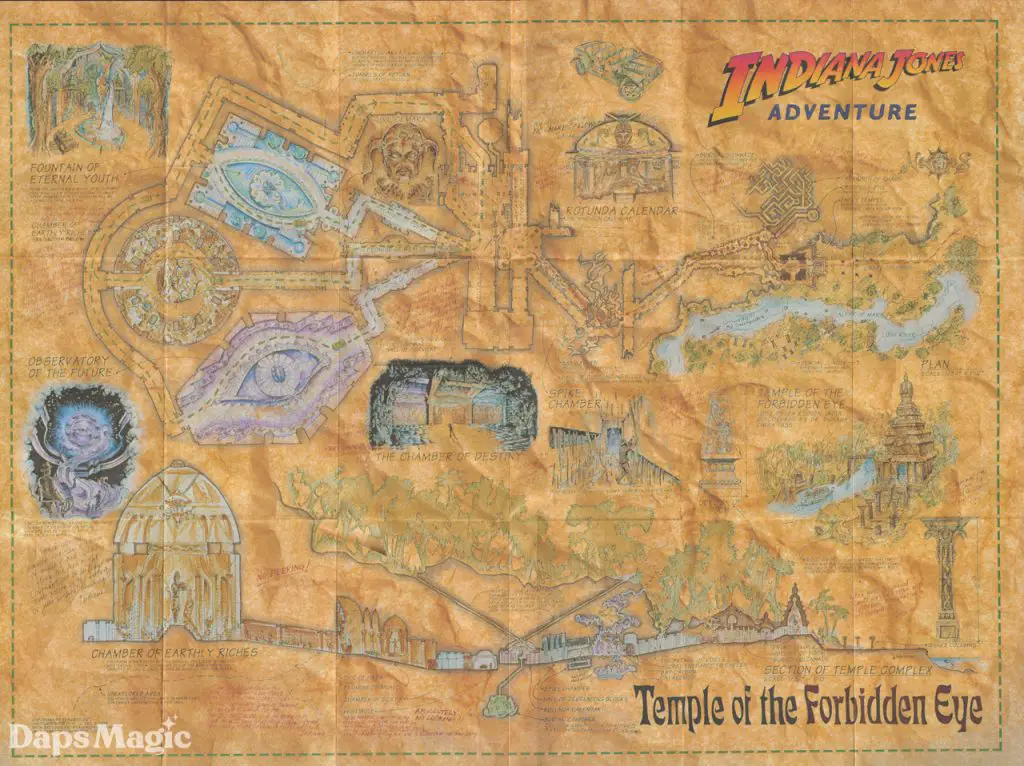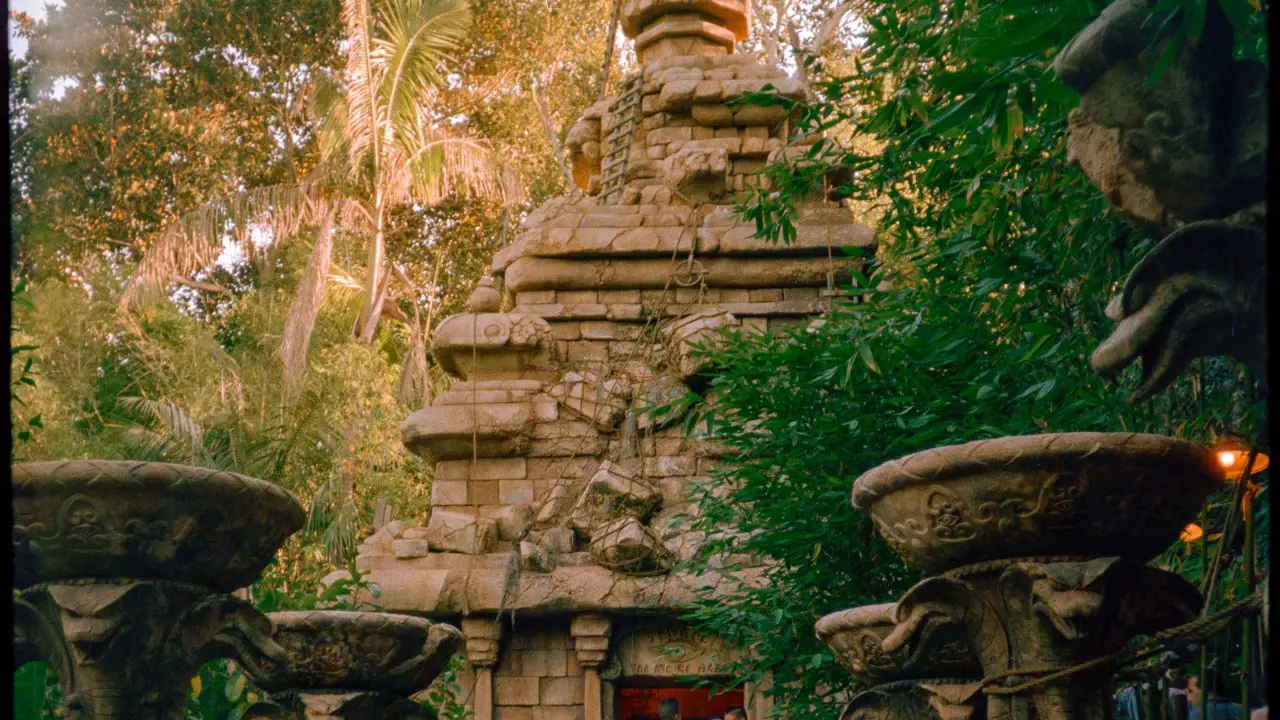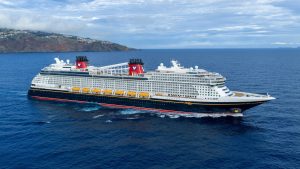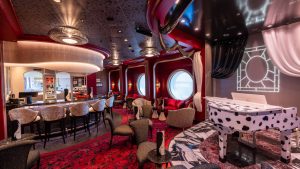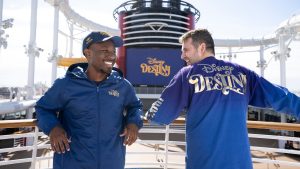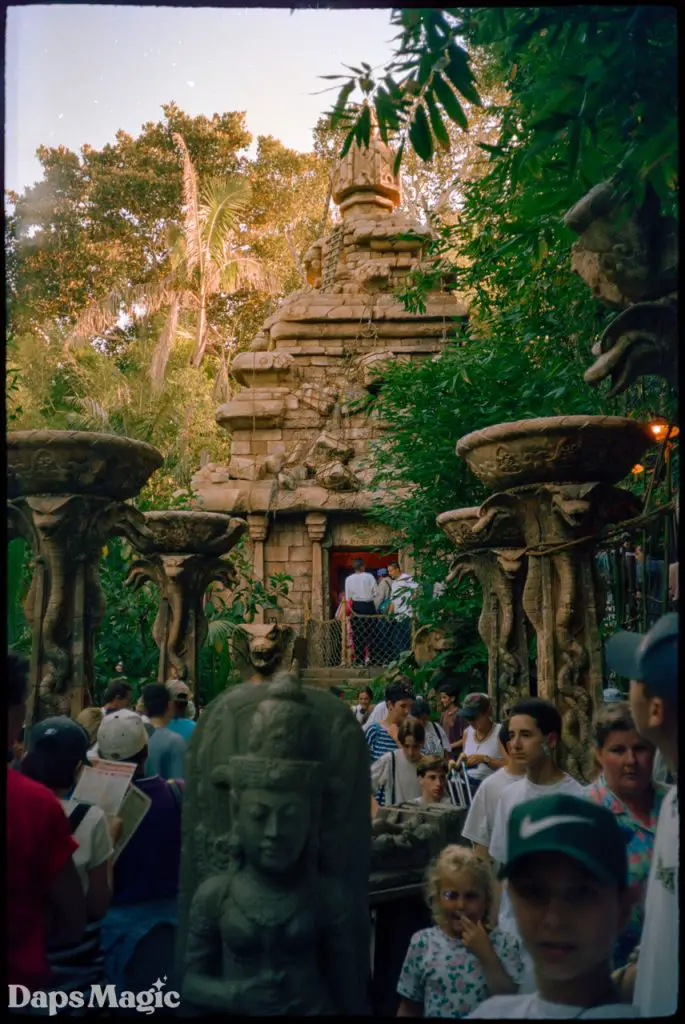
When the Indiana Jones Adventure opened on March 4, 1995, it had been over five years since the park had added a major new attraction. It was the first large scale immersive experience added in the Disney Decade. And, little did we know at the time, it would be that last major addition to Disneyland’s lineup of blockbuster attractions for many years to come
At the time it opened, there was a general belief that the era of big-budget “dark rides” had passed. Star Tours (1987) had ushered in a new era of simulators. Disneyland, Walt’s flagship theme park, had opened only two attractions since then: Splash Mountain (a log flume with major show elements), and Roger Rabbit’s Car Toon Spin ( a traditional dark ride with a literal twist).
All this, however, was hardly on the minds of guests who crowded into Disneyland on that early morning of March 4. Over a year had been spent in promotion and construction. There had been a massive, star-laden “opening night” party, as people had come to expect from Michael Eisner’s publicity team. The media had been feted, and now it was time to unveil The Indiana Jones Adventure to the public.
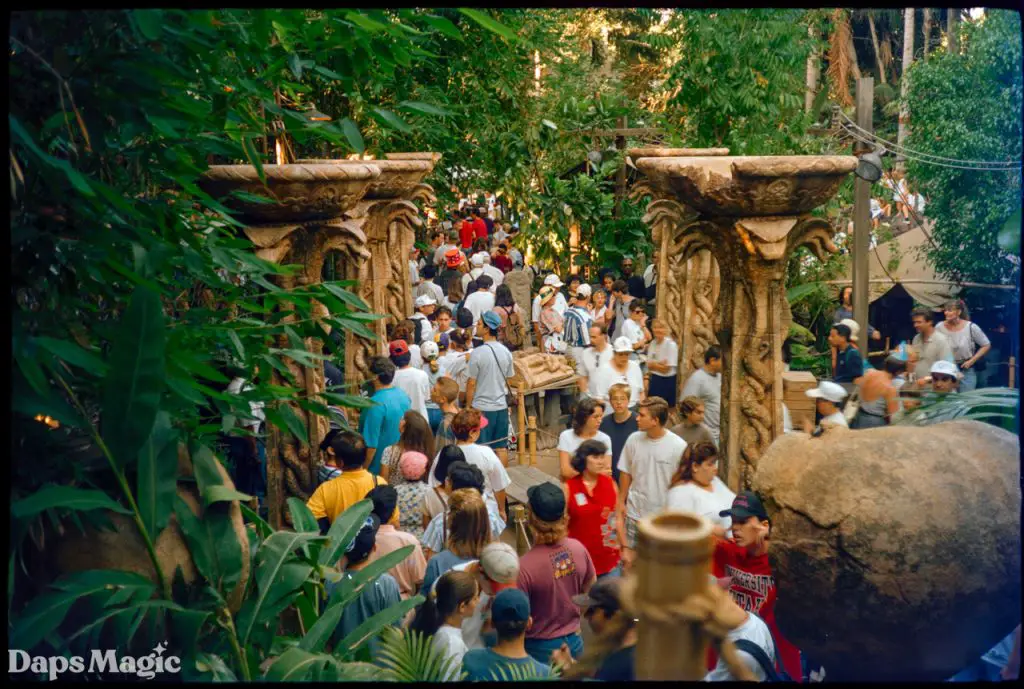
If there had been hopeful thoughts of avoiding large crowds with a March opening, these were quickly dashed by the line that formed on this opening day. The line, lasting well over three hours at certain times, stretched through Adventureland, into the center of the park, and up Main Street USA. According to the guest reaction, then as now, it was worth the wait.
In addition to the ride itself, which proved to be a clever and delirious distillation of the Indiana Jones film experience, the attraction also featured an unusually lengthy interior queue line. This was due to the placement of the attraction in a show building that was some distance from Adventureland itself. It also served to absorb the great number of guests waiting for their opportunity to join Indy on his latest adventure.
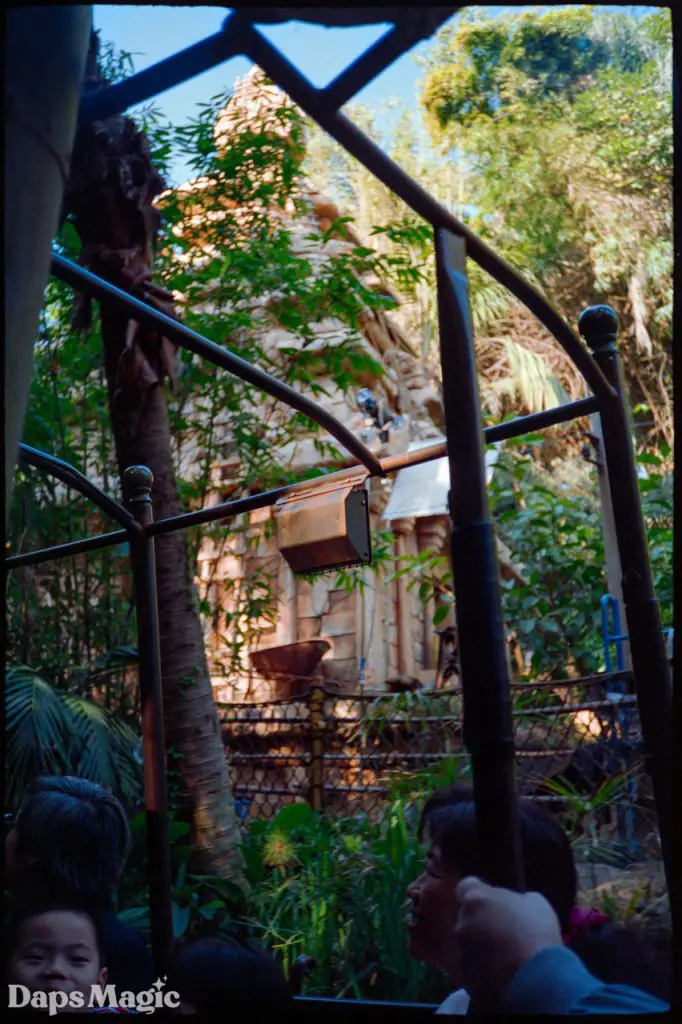
The marquee for the new attraction was a new/old temple ruin, placed along the banks of the existing Jungle Cruise. Once inside, guests found themselves in a series of densely themed environments, which added to the suspense of what lay ahead. A fun and interactive aspect of the queue line was the series of messages scattered throughout, carved on walls and over doorways, in a previously unknown hieroglyphic language.
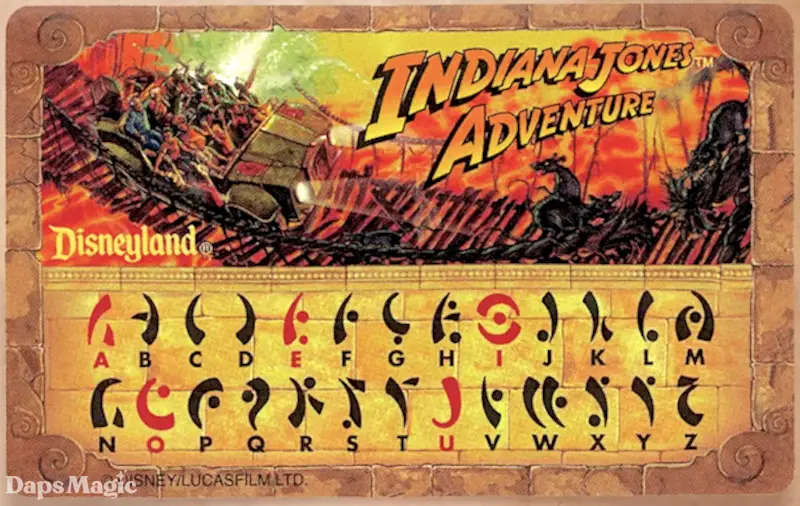
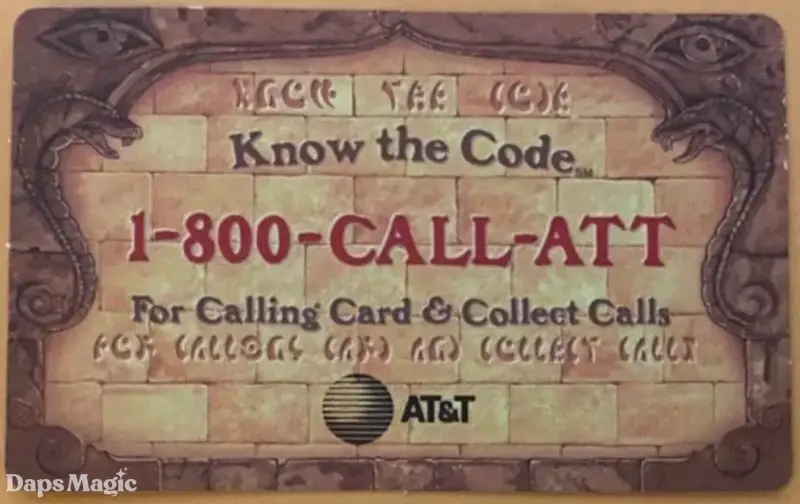
What made it interactive was a “decoder card,” handed out liberally to guests experiencing the Indiana Jones Adventure for the first time. Maraglyphs was the name given to the new language.
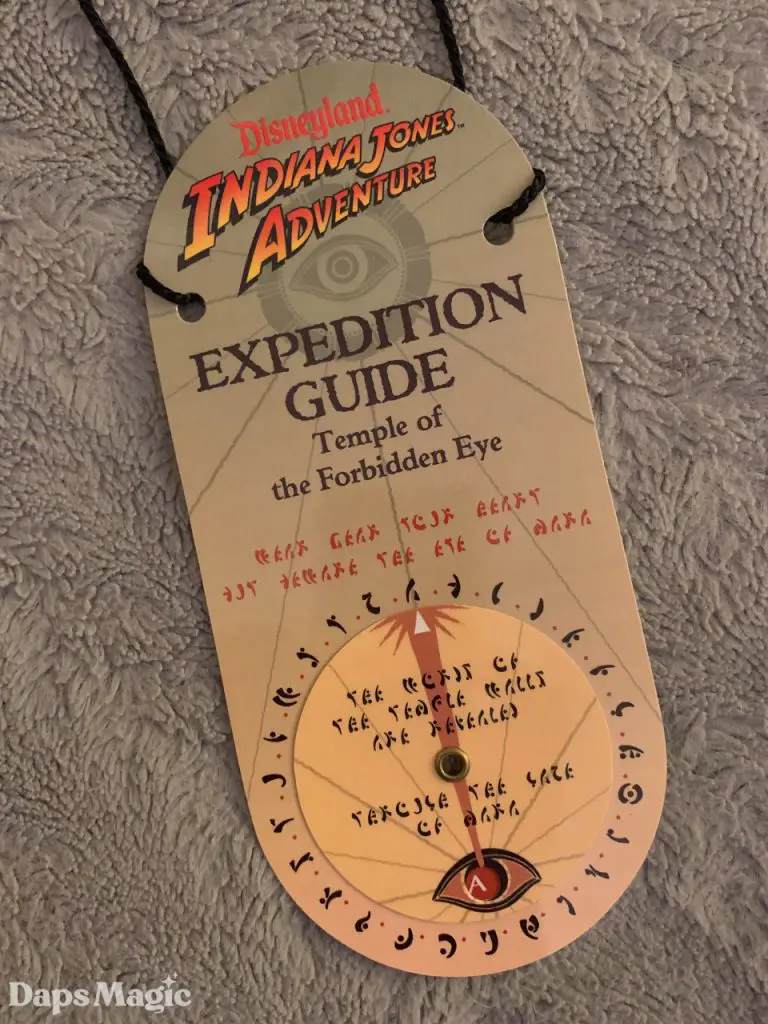
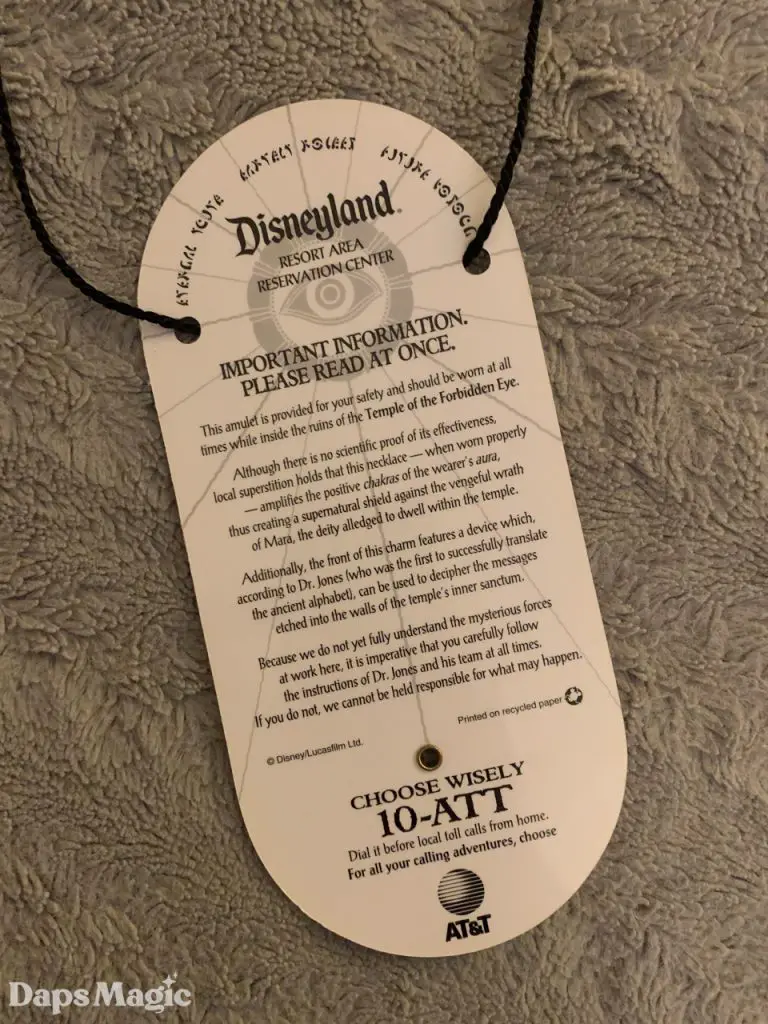
Media guests from the previous day were given a deluxe version of the decoder, identified as an “Expedition Guide.” Lengthy instructions on the back identified it as an amulet to be worn at all times for safety. In addition to the claim that it “amplifies the positive chakras of the wearer’s aura,” the charm also featured a device that could be used to decipher maraglyphs.
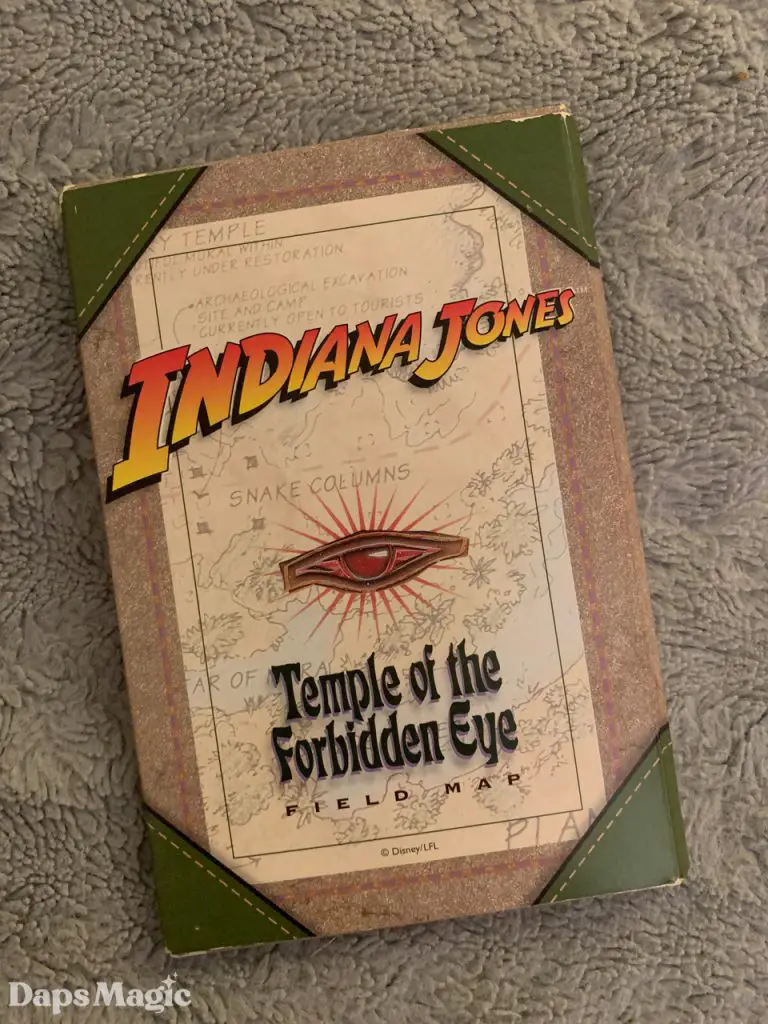
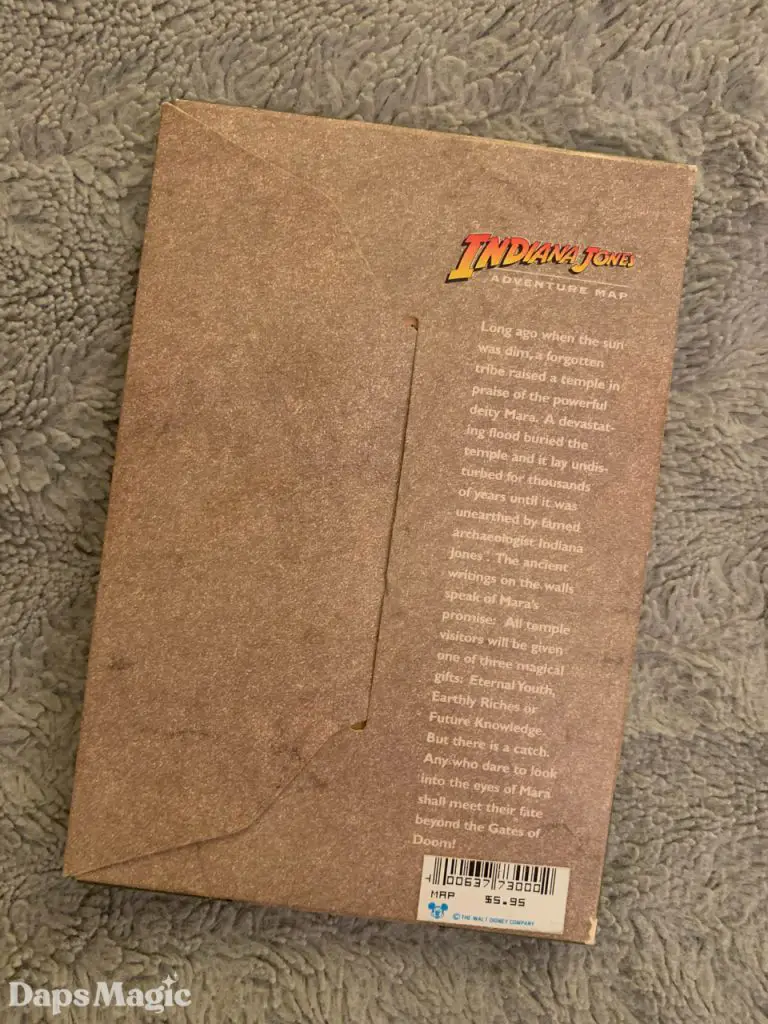
In addition to the free decoder cards and field guides, there was also a “Field Map,” which was available to those lucky first-year guests who happened to spot them for sale in the Indiana Jones Adventureland Outpost shop, directly across from the entrance to the attraction. This was a remarkably nondescript-looking item, and it carried a price tag of $5.95 (adjusted for inflation, that would be about $12.50 today). Once opened, however, the true value of this rare souvenir can be seen.
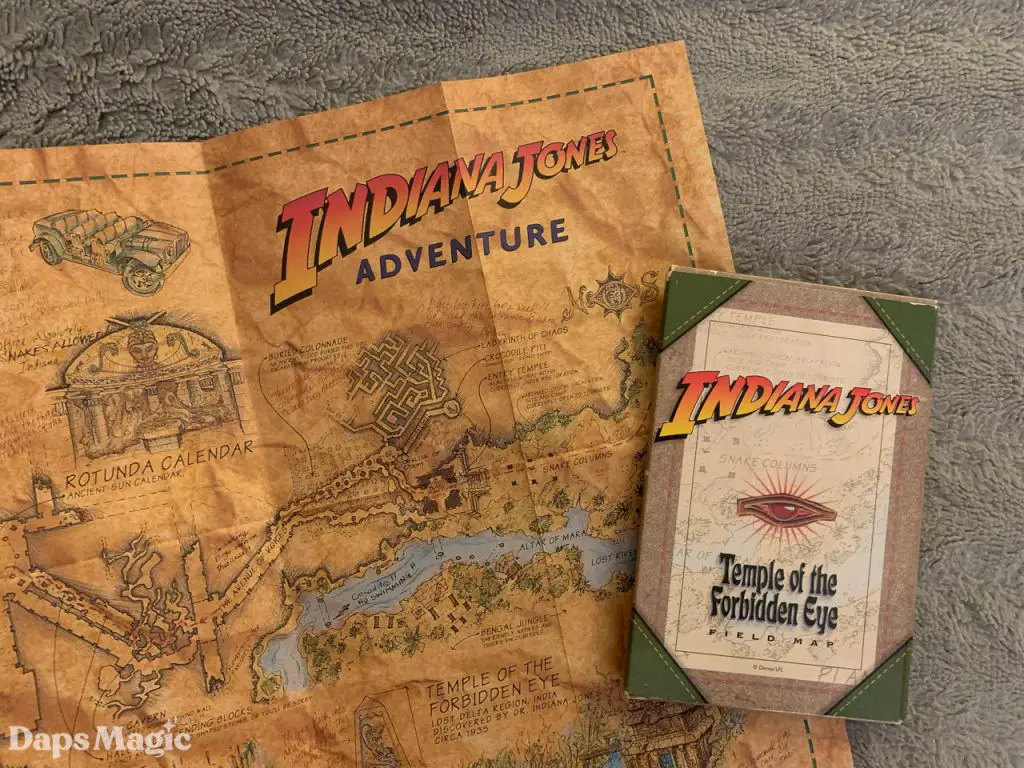
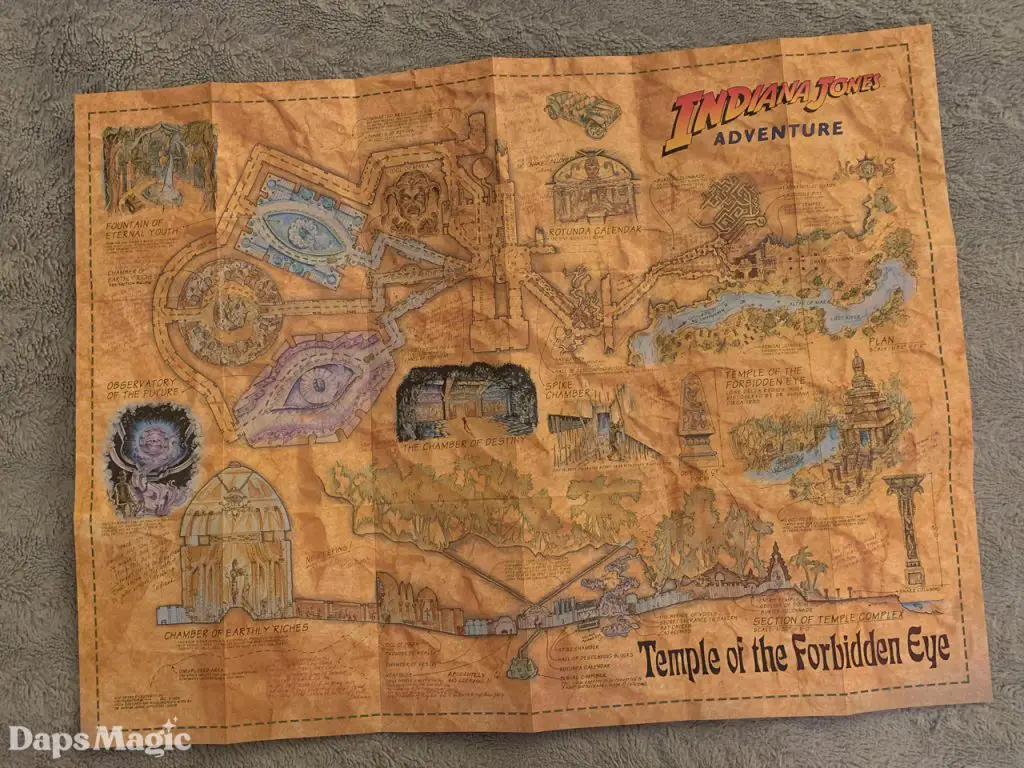
Ostensibly, it is a meticulously charted map of all the areas of the temple that had been previously explored by Indiana Jones. Notes and speculative comments are penciled in for some areas. While the depiction of the three temple chambers shows the promise of Eternal Youth, Earthly Riches, or Future Knowledge, there is also an easily overlooked notation just before them, simply stating, “Possible hidden entrance to the legendary Tunnel of Torment.”
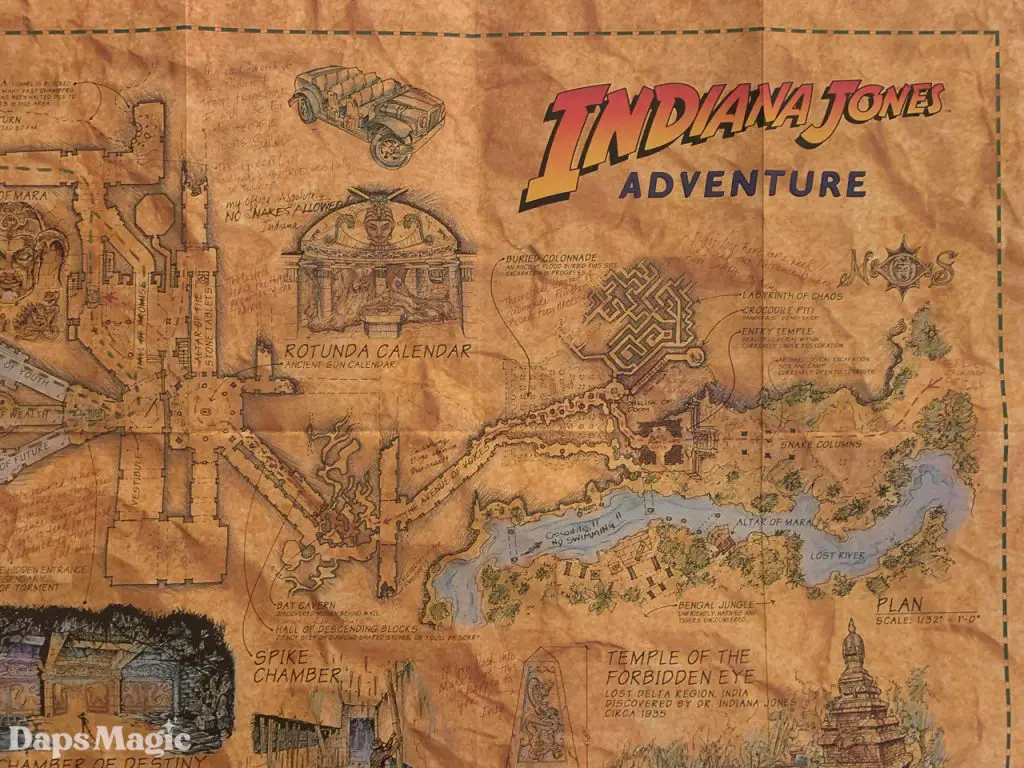
For fans of the attraction, this may look familiar. There is a copy tacked to a bulletin board in the “office” area of the queue line. And for those who know how to look, there is an unexpected treat. The depiction of the lengthy entrance, from the temple forecourt to the Chamber of Destiny, is an accurate depiction of the Indiana Jones queue line, right down to the double-sided loading dock.
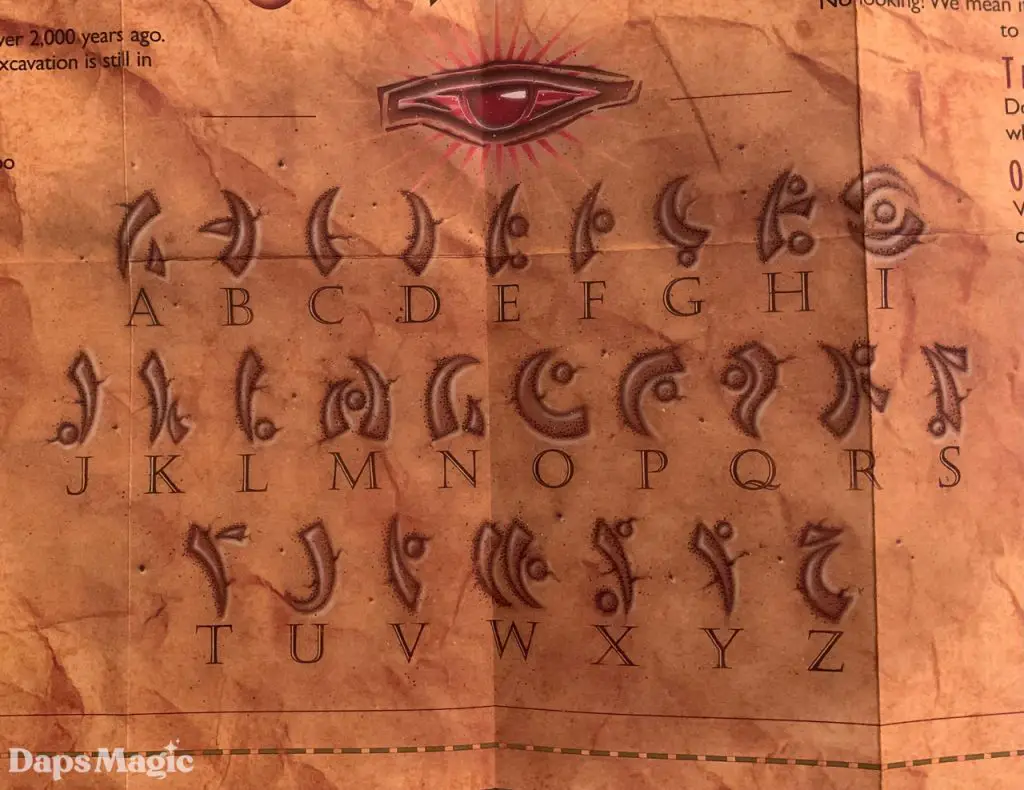
And, getting back to the Maraglyphs, the back of the Field Map carried not only detailed descriptions of some of the features of the temple, but a large-scale guide to deciphering its hidden language. Guests who made this purchase “chose wisely,” thirty years ago at Disneyland.
